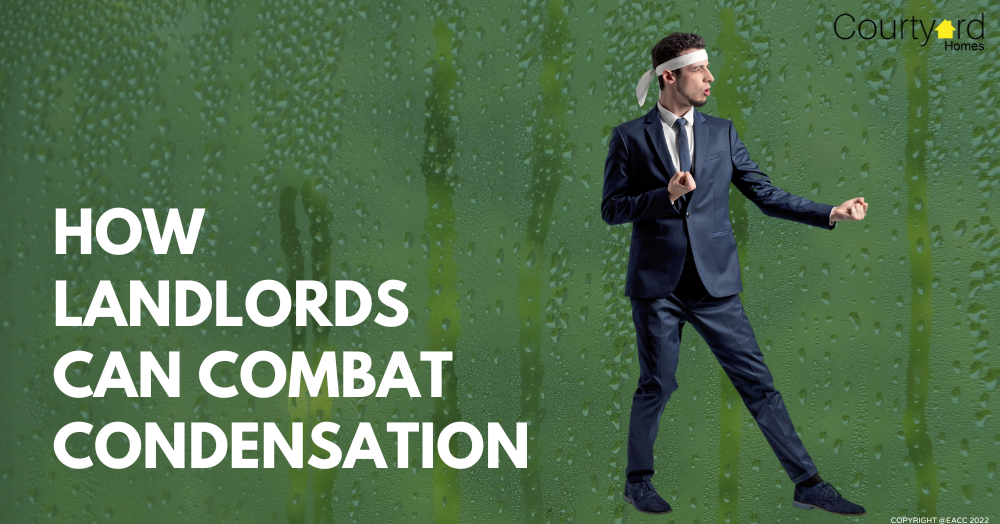
How to Stop Condensation Becoming a BIG Problem
This two-minute read looks at some simple steps landlords and tenants can take to reduce the risk of condensation causing mould, damp and disputes.
What causes condensation?
When moist air is cooled by contact with cold surfaces such as walls, windows or mirrors, the moisture condenses into water droplets, AKA: condensation.
This can often cause unsightly mould and, in extreme cases, be unhealthy. Not just in terms of physical health but because it’s a common breeding ground for disputes between landlords and tenants.
Why should landlords take it seriously?
Condensation is more likely to strike when the weather gets colder outside and people start warming up their homes. So, October to February are the main ‘problem’ months to be aware of when it comes to condensation.
The issue is a recurring reason why landlords and tenants have disputes. This is because avoiding condensation can fall under the tenant’s responsibilities. Think of it as an upkeep issue. While certain other types of dampness are usually beyond a tenant’s reasonable control (usually rising and penetrating), making it the landlord’s responsibility.
If the cause of it is unclear, it’s fertile ground for a fallout.
Also, most rental property insurance policies don’t cover dampness caused by condensation.
What’s the difference between damp and condensation?
Condensation that leads to mould is usually easily treated and predominantly caused by poor ventilation. Rising damp, which often spreads up walls, differs from penetrating damp caused by outside water seeping into the building. While both are curable, they can be costly to resolve.
How to combat condensation
By being proactive and helping tenants be fully informed about the causes of condensation and its risks, landlords insulate themselves from more significant problems in the future.
These simple steps go a long way to keep condensation at bay.
1) Open windows whenever reasonably possible (at least once a day, even if it’s for five minutes).
2) Keep trickle vents in windows open.
3) Don’t dry clothes inside (a big cause of winter condensation).
4) Wipe away any moisture after a bath or shower.
5) Never overpopulate a property.
6) Consider using moisture-absorbing products (plenty on Amazon).
7) Good extractor fans are an excellent investment for landlords to install.
If a tenant takes reasonable care and a landlord is proactive, the C-word shouldn’t be something to worry about.
When we move new tenants into rental properties in Cheshire, we always discuss how to combat condensation and their responsibilities.
Thanks for reading, and if you’re a landlord seeking a letting agent who makes your life easier – give us a call.